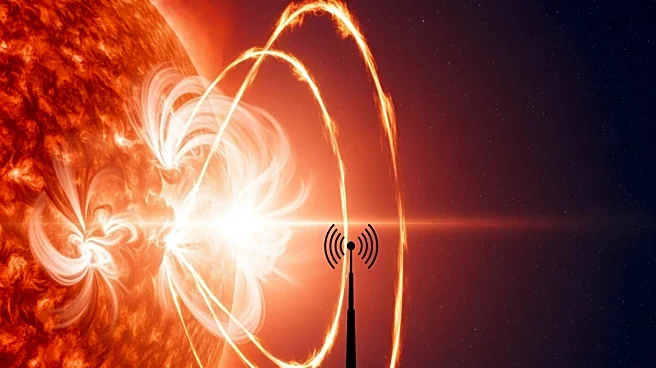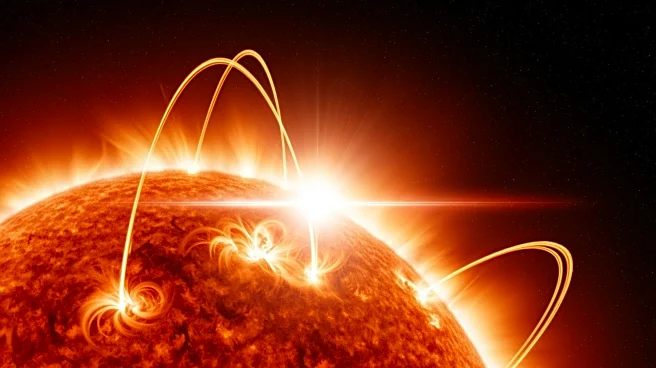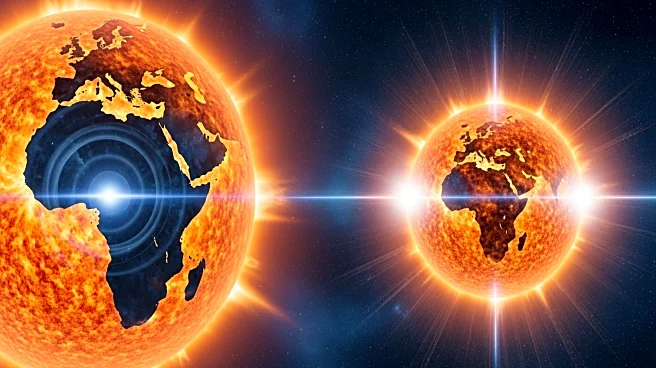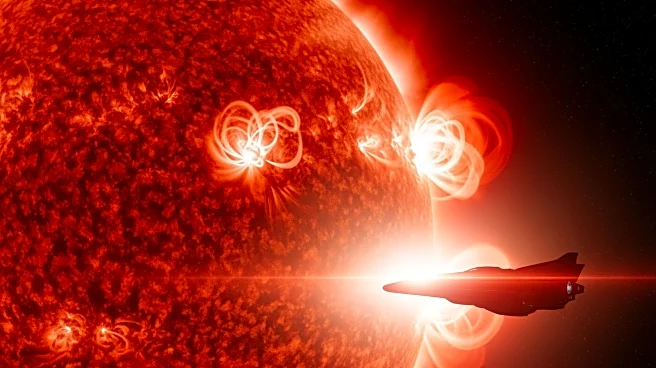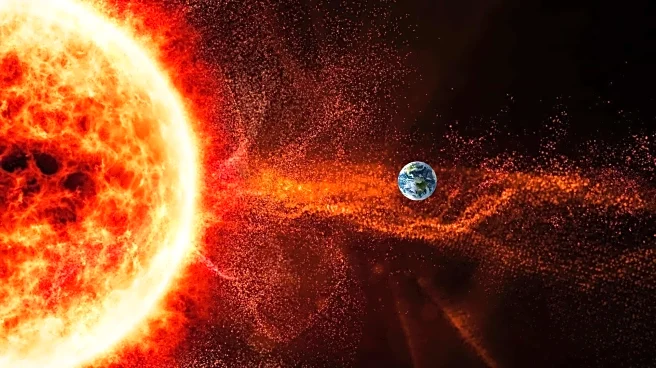What's Happening?
On November 14, 2025, the Sun emitted an intense X4-class solar flare, marking the second-most powerful eruption of the year. The flare originated from sunspot AR4274 and peaked at 3:30 a.m. EST. It caused
strong radio blackouts across the sunlit side of Earth, with the most severe disruptions occurring in central and eastern Africa. The flare was accompanied by a coronal mass ejection (CME), which is being analyzed to assess its potential impact on Earth. The sunspot region responsible for the flare is nearing the Sun's western limb, reducing the likelihood of the CME being directed toward Earth.
Why It's Important?
Solar flares and associated CMEs can significantly impact Earth's technological systems, including radio communications and power grids. The intensity of this flare, classified as X4, underscores the need for continuous monitoring and preparedness for space weather events. Disruptions in communication systems can affect various sectors, including aviation and emergency services. Understanding the behavior of sunspots and solar activity is crucial for predicting and mitigating the impacts of such events.
What's Next?
Space weather forecasters are closely monitoring the CME data to determine any potential impact on Earth. The position of the sunspot region suggests that any associated CME is less likely to affect Earth directly. However, ongoing analysis will provide more clarity on the situation. Continued observations and research are essential for improving predictions and responses to solar activity.
